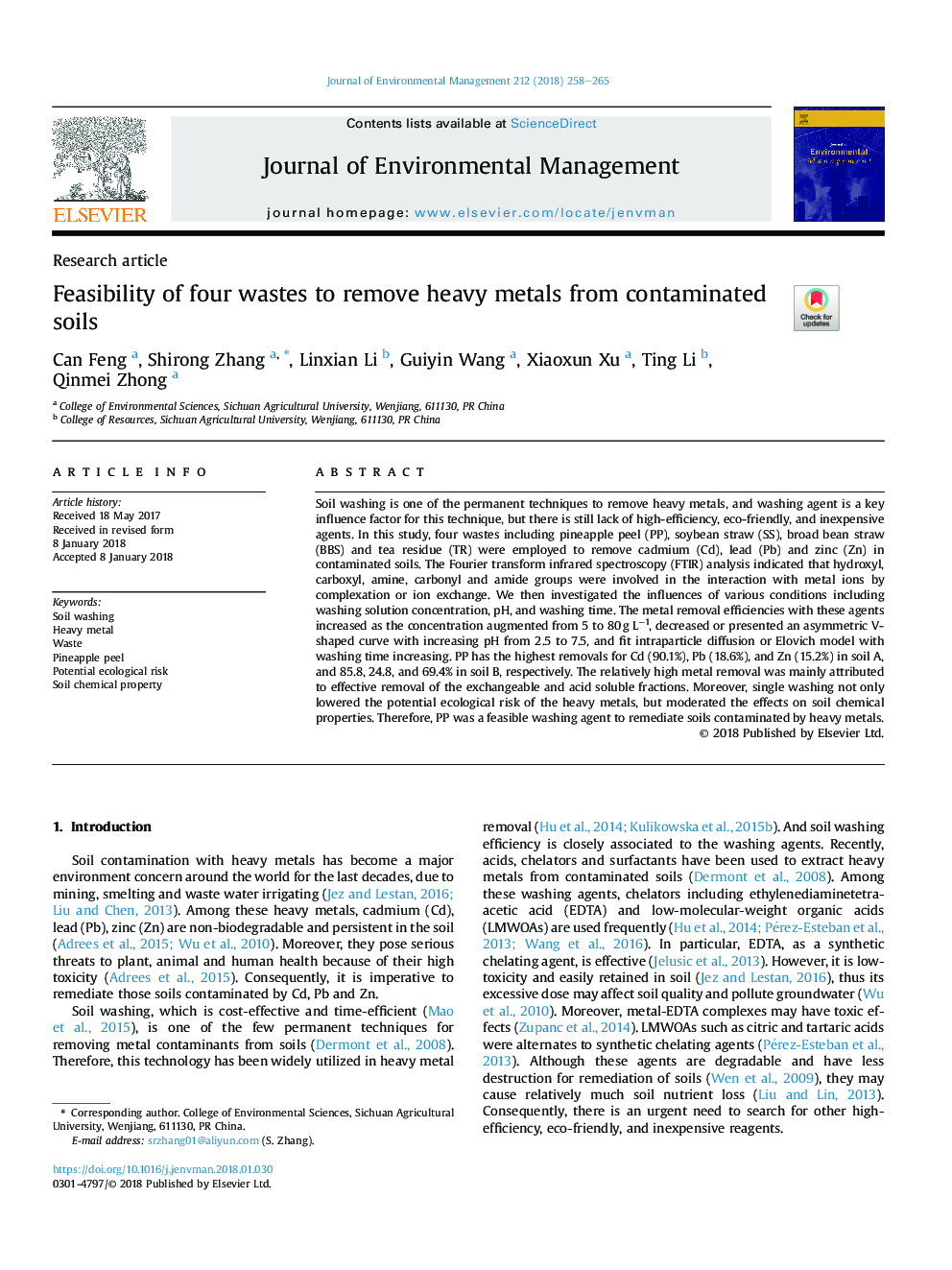| Article ID | Journal | Published Year | Pages | File Type |
|---|---|---|---|---|
| 7478091 | Journal of Environmental Management | 2018 | 8 Pages |
Abstract
Soil washing is one of the permanent techniques to remove heavy metals, and washing agent is a key influence factor for this technique, but there is still lack of high-efficiency, eco-friendly, and inexpensive agents. In this study, four wastes including pineapple peel (PP), soybean straw (SS), broad bean straw (BBS) and tea residue (TR) were employed to remove cadmium (Cd), lead (Pb) and zinc (Zn) in contaminated soils. The Fourier transform infrared spectroscopy (FTIR) analysis indicated that hydroxyl, carboxyl, amine, carbonyl and amide groups were involved in the interaction with metal ions by complexation or ion exchange. We then investigated the influences of various conditions including washing solution concentration, pH, and washing time. The metal removal efficiencies with these agents increased as the concentration augmented from 5 to 80â¯gâ¯Lâ1, decreased or presented an asymmetric V-shaped curve with increasing pH from 2.5 to 7.5, and fit intraparticle diffusion or Elovich model with washing time increasing. PP has the highest removals for Cd (90.1%), Pb (18.6%), and Zn (15.2%) in soil A, and 85.8, 24.8, and 69.4% in soil B, respectively. The relatively high metal removal was mainly attributed to effective removal of the exchangeable and acid soluble fractions. Moreover, single washing not only lowered the potential ecological risk of the heavy metals, but moderated the effects on soil chemical properties. Therefore, PP was a feasible washing agent to remediate soils contaminated by heavy metals.
Related Topics
Physical Sciences and Engineering
Energy
Renewable Energy, Sustainability and the Environment
Authors
Can Feng, Shirong Zhang, Linxian Li, Guiyin Wang, Xiaoxun Xu, Ting Li, Qinmei Zhong,
